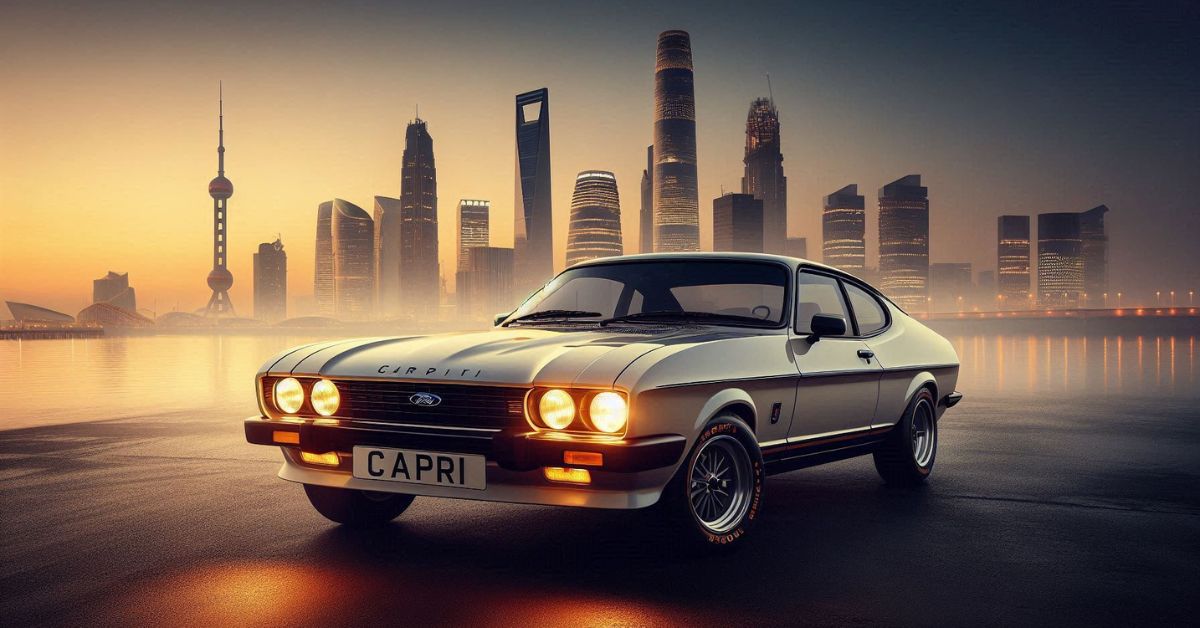The Ford Mustang Stablemate Capri, often regarded as the quintessential American pony car, has always held a place in automotive history for its bold performance and style. However, it wasn’t the only Ford creation to captivate enthusiasts around the globe. Sharing a stable with the Mustang was the Ford Capri, a car that became a symbol of sportiness and affordability, particularly in Europe. The Capri’s story is one of innovation, adaptation, and enduring appeal, standing as a worthy stablemate to the legendary Mustang.
A European Pony Car
Introduced in 1969, the Ford Capri was conceived as a European counterpart to the Mustang. Ford recognized the success of the Mustang in North America and sought to replicate this formula in Europe, where smaller, more efficient cars were in greater demand. The Capri was marketed as “the car you always promised yourself,” emphasizing its accessibility and aspirational qualities.
Designed under the leadership of Philip T. Clark, who also contributed to the Mustang’s development, the Capri featured a sleek, long-hood, short-deck design reminiscent of its American sibling. Its aggressive stance and coupe body style made it a head-turner, while its diverse engine lineup ensured it could cater to a wide range of customers.
Engine Options and Performance
One of the Capri’s most notable features was its variety of engine options. Buyers could choose from inline-four, V6, and later V8 engines, depending on their budget and performance needs. This flexibility mirrored the Mustang’s approach, which offered something for everyone, from casual drivers to performance enthusiasts.
In its early years, the Capri was powered by engines ranging from a modest 1.3-liter four-cylinder to a robust 3.0-liter V6. The performance-oriented RS3100, introduced in the mid-1970s, became a legend in its own right, boasting a high-revving engine and enhanced suspension for spirited driving. Meanwhile, the Capri’s affordability and fuel efficiency made it an attractive choice for those who wanted style without breaking the bank.
Distinctive Styling and Design
While the Capri’s inspiration from the Mustang was evident, it had its own distinctive European flair. Its compact dimensions, frameless doors, and minimalist interior catered to European tastes, while the optional vinyl roof and bold colors gave it a touch of American glamour. Over the years, the Capri underwent several design changes, including the introduction of quad headlamps and a more aerodynamic profile in later generations.
The second generation, launched in 1974, refined the original design while improving aerodynamics and safety features. The third generation, introduced in 1978, further modernized the Capri with a sharper, more angular look and a focus on performance-oriented models.
Also Read: Unveiling the Make1M McLaren: A Hypercar of Ultimate Precision and Performance
The Capri in North America
While the Capri was primarily a European model, it also found a home in North America under the Mercury brand. Marketed as the Mercury Capri, it offered American buyers a taste of European engineering and style. The first-generation Mercury Capri, sold from 1970 to 1978, was imported directly from Ford’s European factories and featured a range of efficient engines that contrasted with the larger, thirstier powerplants of many American cars.
In 1979, the second-generation Mercury Capri was introduced, sharing the Fox platform with the Mustang. This version of the Capri, produced until 1986, featured unique styling cues, including a distinctive front fascia and, from 1983 onward, a bubble-back rear window. Although it shared many components with the Mustang, the Capri retained its own identity, appealing to buyers who wanted something a little different.
Motorsport Legacy
The Ford Capri’s performance credentials weren’t just confined to the road. It enjoyed significant success in motorsport, particularly in touring car racing. The Capri RS3100 and later RS2600 models became dominant forces on the track, competing in events such as the European Touring Car Championship. Their lightweight construction, powerful engines, and agile handling made them formidable contenders, cementing the Capri’s reputation as a true driver’s car.
The Capri’s Decline and Legacy
By the mid-1980s, changing market demands and stricter emissions regulations spelled the end for the Capri. Production ceased in 1986, marking the end of an era for Ford’s European pony car. However, the Capri’s influence can still be felt today. Its blend of style, performance, and affordability set a template for future generations of sporty coupes.
In recent years, the Capri name has been revived in various forms, most notably as an electric crossover concept. While these modern interpretations have sparked mixed reactions among enthusiasts, they highlight the enduring appeal of the Capri name and its association with innovation and style.
Conclusion About Ford Mustang Stablemate Capri
The Ford Mustang and its stablemate, the Capri, represent two sides of the same coin. While the Mustang captured the hearts of American drivers with its raw power and bold design, the Capri brought similar excitement to European roads, tailored to the needs and preferences of its audience. Together, they showcase Ford’s ability to create cars that resonate with drivers across the globe, leaving a legacy that continues to inspire and excite.
The Capri may not enjoy the same level of fame as the Mustang, but its role in automotive history is no less significant. As a sporty, accessible, and versatile coupe, it proved that performance and style could go hand in hand with practicality and affordability. For those who experienced the joy of owning a Capri, it truly was the car they always promised themselves.

